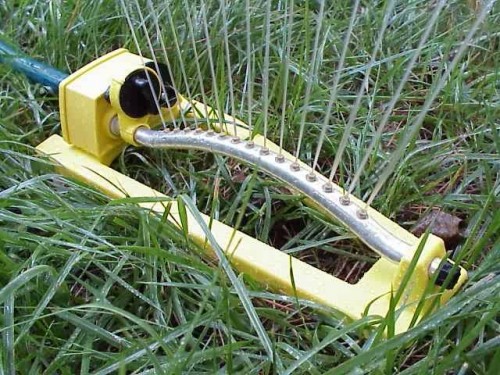





Plants must have water to survive. Water in a plant is like blood in an animal. Water carries dissolved nutrients, sugars and hormones throughout the plant’s system. Some plants can go for long periods receiving only minimal water. Others require water every day. Here are some guidelines to help you determine when, where and how much to water.
Common turfgrasses vary in their drought tolerance.
Drought tolerance (highest to lowest):
•Bermudagrass
•St. Augustine grass
•Centipedegrass, Fescue grass, Emerald zoysiagrass and El Toro zoysiagrass
•Meyer zoysiagrass
Turfgrasses need approximately one inch of water per week in order to remain green.
Dormancy
Some grasses have the ability to go dormant when suffering from drought. During dormancy, the grass will turn yellow but, if healthy to begin with, it can recover when water becomes available.
Should you water your lawn?
Using the facts above:
•Take into account personal and professional predictions regarding local weather for the next two months.
•Consider whether or not a total water ban may be imposed in your area.
•Decide if a small area can be watered or if the entire lawn should be left dry.
•Estimate the cost of replacing your lawn if it becomes severely damaged.
Proper Lawn Watering
Nine out of every ten problems in the landscape are related to water – not enough water, too much water or water that’s too frequently applied. In turf, daily watering or watering on alternate days can be a harmful garden practice.
Light, frequent waterings cause the turf to develop shallow root systems. Shallow roots have a limited area to obtain the nutrients they need and are more prone to drought stress. Deep, infrequent watering stimulates roots to grow deep in search of water as the soil dries out. Deep-rooted turf is stronger, healthier turf.
The timing of waterings is very important. The ideal time to apply water is between 10 pm to 9 am. Mid-day watering results in 60 percent of the water either lost through evaporation or ineffectively taken up by heat-stressed turf.
•Apply 1 – 1 1/2 inches of water one time each week as quickly as possible without creating runoff.
•Overlap the area being covered between one sprinkler station and the next.
•Water turf separately from shrubs, ground covers and other beds.
•Avoid watering in windy conditions which cause water to drift.
•A rainfall of 1 inch or greater will substitute for a watering.
Do not water your turf again until it shows signs of stress. Signs may include curling of leaf blades, turf turning gray-green in color, or foot prints remaining on the turf after it has been walked on. When you see these signs, it is time to water again.
Finally, to decrease your turf’s demand for water, raise the mowing height 1/2 inch in the summer and remove no more than 1/3 of the total height of your turf when you mow. During periods of drought, reduce the amount of fertilizer. There in no need to stimulate the grass to grow when water is limited.
See also
Turfgrass Water Management

Copyright © www.100flowers.win Botanic Garden All Rights Reserved